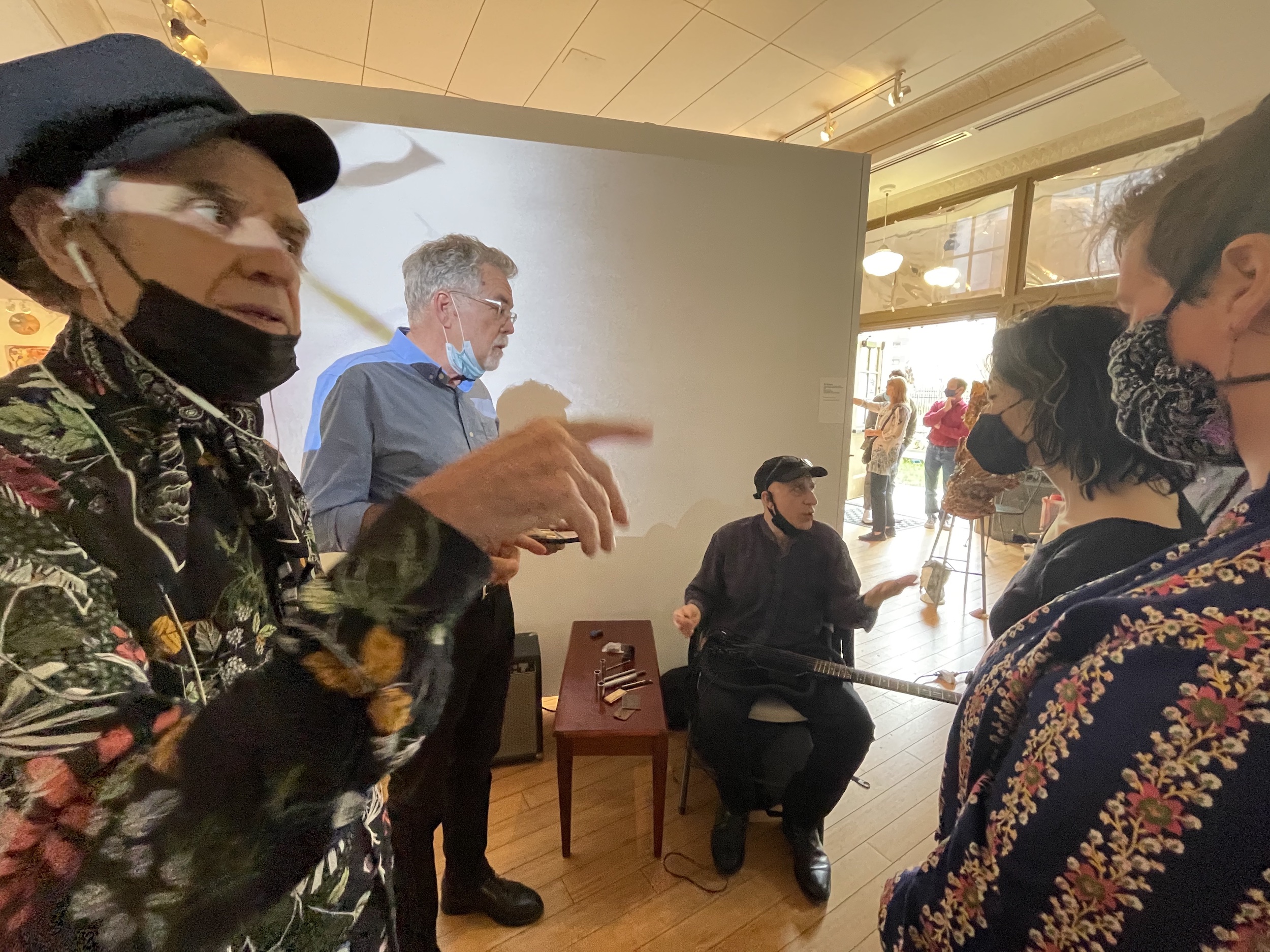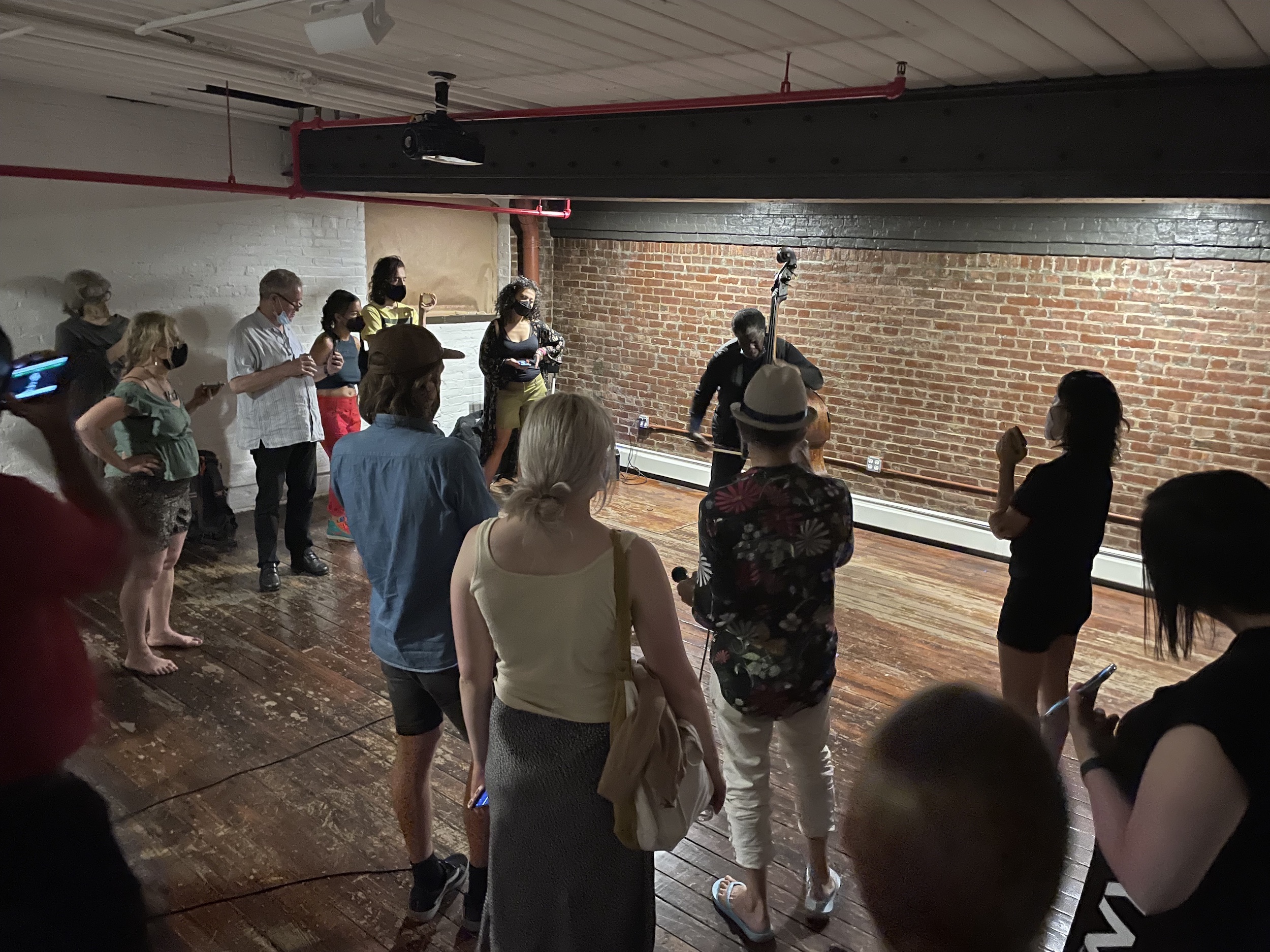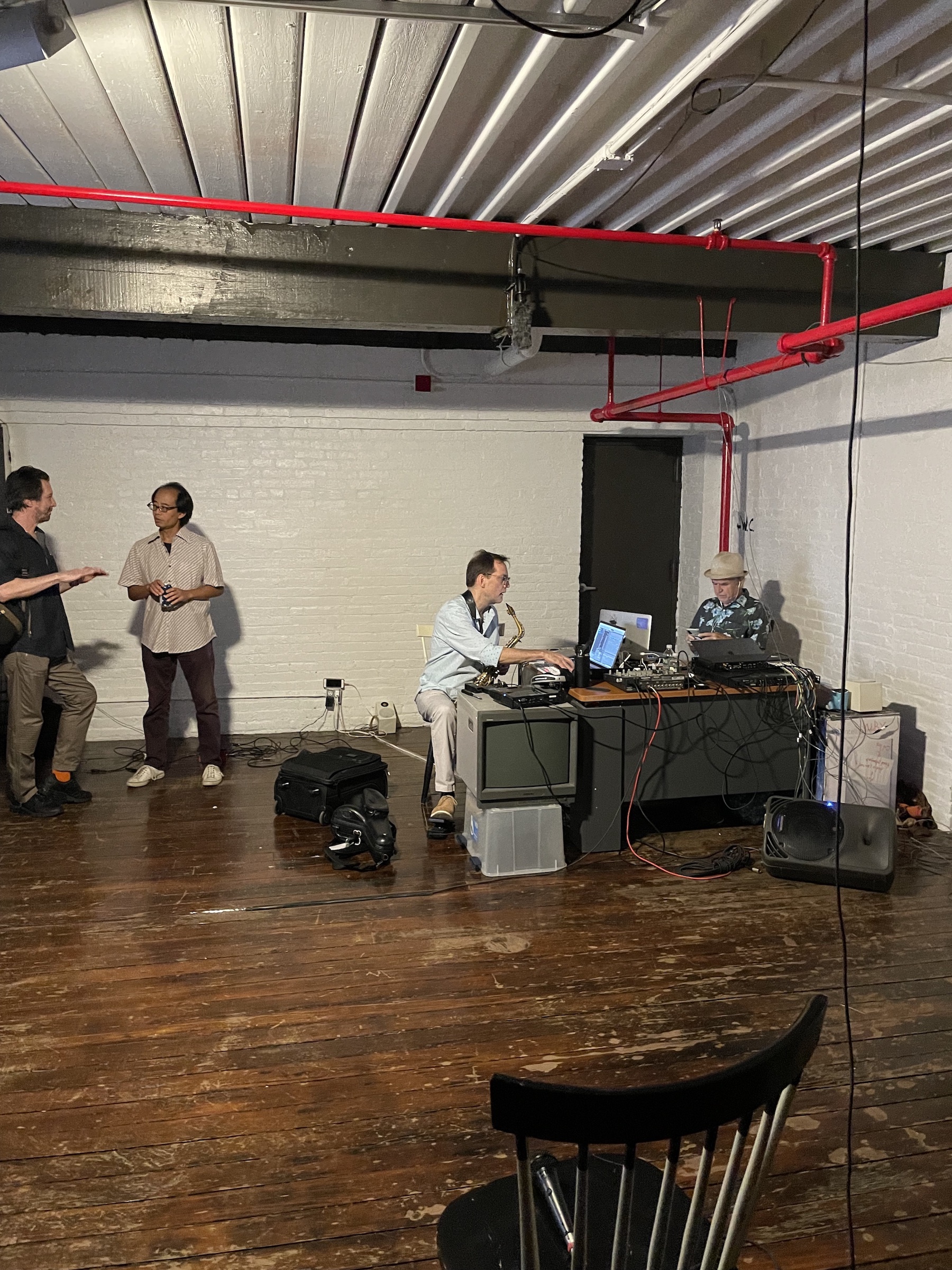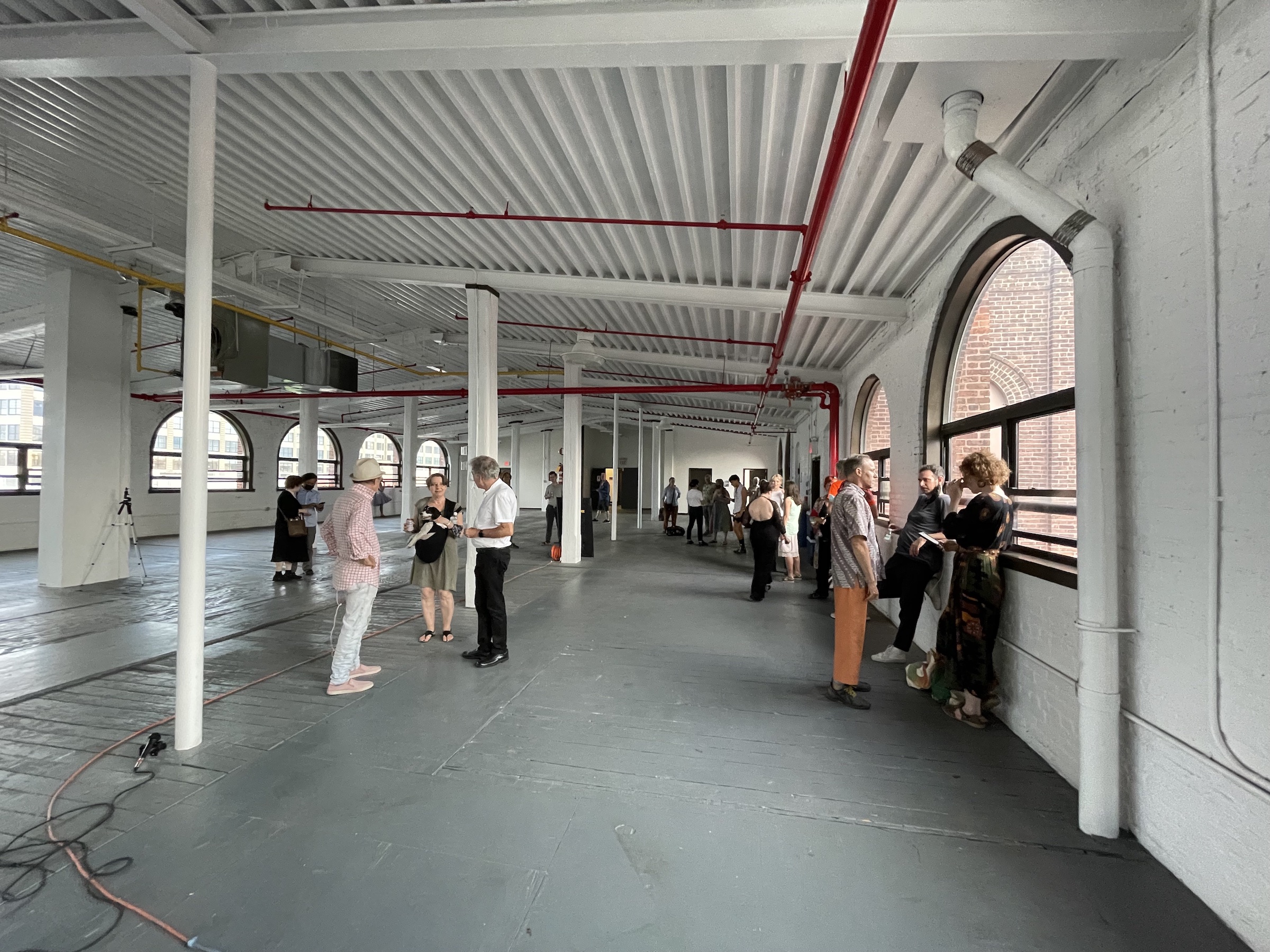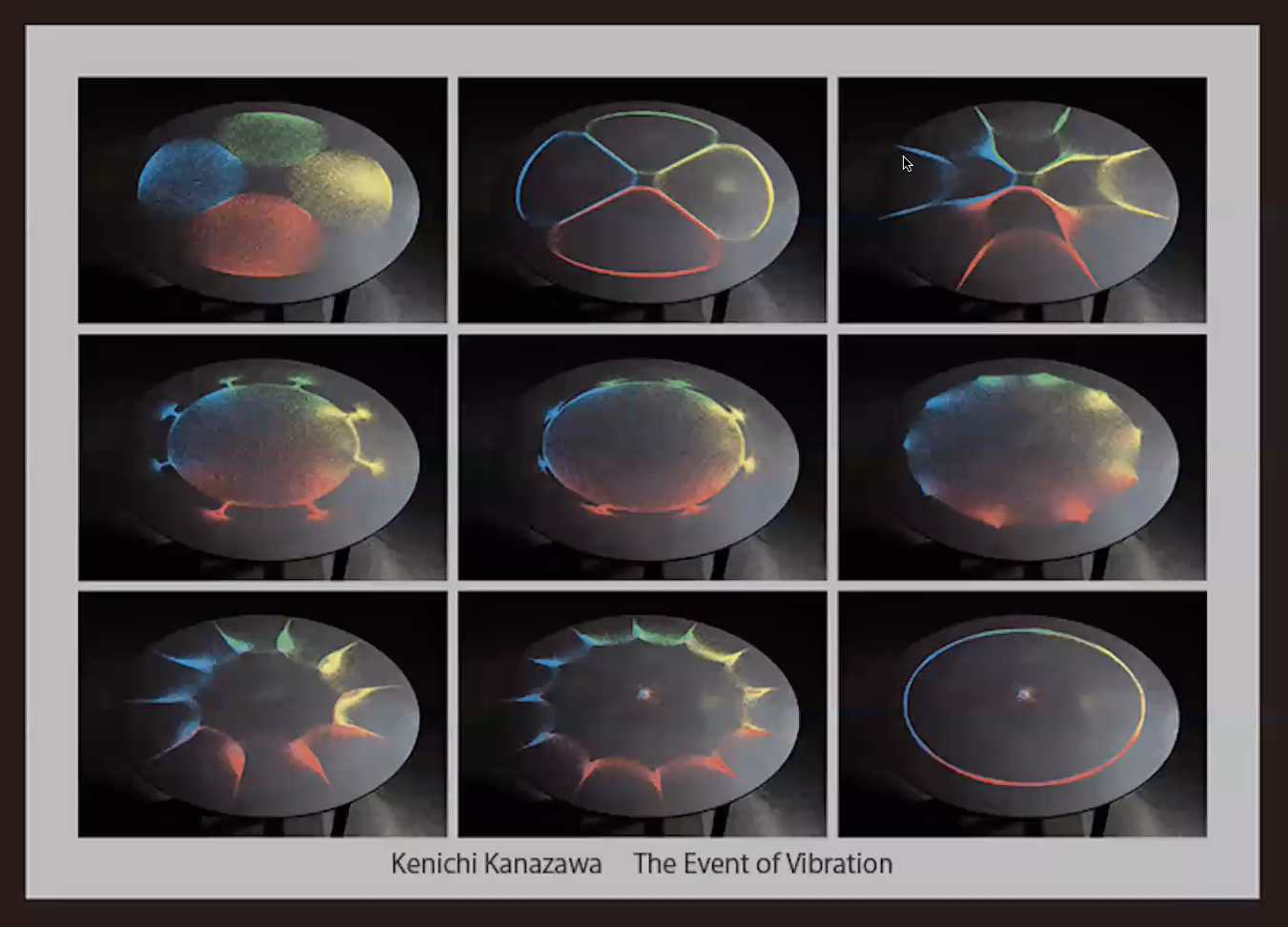
wbxtv: Kenichi Kanazawa The Event of Vibration Live Performance and Q&A
April 19, 2021
Presence
May 11, 2021ANTHONY HADEN-GUEST (Speaker)
ELLIOTT SHARP (Guitar)
MATT SULLIVAN (Oboe)
Live improvisations to KENICHI KANAZAWA’S “Chladni” patterns
Performances by
MAHO OGAWA & BEATRICE ANTONIE MARTINO
&
JESUS PAPOLETO MELENDEZ
Recorded – Saturday April 24, 2021





The event brought together elements of two concurrent exhibitions at WhiteBox @ El Barrio’s Artspace @ PS109 in a wide-ranging evening of joyous performances examining the Making zone from many perspectives, also embodied by Ken Cro-Ken’s artworks on display. After remarks by WhiteBox director Juan Puntes and exhibition organizer Kyoko Sato, the performances kicked off with a playful poetic invocation by Anthony Haden-Guest. Livestreaming from Washington DC, the renowned journalist/art critic/socialite called down, or called out, the muses of Making in the first chapter of his satire, “The Secret History of Modern Art.” In this opening salvo, Haden-Guest skewers the forefathers of modern art, starting with Gustave Courbet. Art idols Gauguin, Van Gogh, Picasso, and “Duchamp, Inc.” did not escape Haden-Guest’s humorous hard truths. The audience enjoyed this poetic takedown of the art stars of the past, which cleared some of the cobwebs before the night’s proceedings. Did I say audience? Yes, after a year of lockdown and isolation, it was a pleasure to join a small group of viewers to enjoy a performance in person. We were appropriately masked, distanced, sanitized, but we were THERE TOGETHER in one space, simultaneously enjoying the event. That in itself was thrilling. Haden-Guest’s poetry reading was followed by a live improvised collaboration blending music and dance. Avant-garde composer and performer Elliott Sharp played a fretless electric guitar. Oboist and composer Matt Sullivan, whose range extends from the classical to the avant-garde, played oboe and English horn with electronic looping. The electronic effect helped to blend the two performers’ different styles and instrumentation. At times it seemed that E# was playing the oboe on his guitar while Matt Sullivan conjured plangent guitar-like sounds from his woodwinds. Two black-clad spirits emerged, writhed, and likewise channeled each other’s movements and energies. These were the dancers and choreographers Maho Ogawa and Beatrice Antonie Martino. Their improvised movements rhymed and contrasted, complementary and distinct as yin and yang. (As someone in the audience remarked.) The dancers sometimes inhabited opposite edges of the space, with Beatrice Antonie Martino disappearing behind screens separating the “From the Viewpoint of Making” part of the exhibition from Ken Cro-Ken’s paintings and sculptures in the main gallery. Suddenly Beatrice Antonie Martino’s hands would appear through a space in the partition, eloquently twisting and fluttering, before she herself emerged and moved with lithe expressiveness. Across the room, Maho Ogawa wound through the audience to reach open space with minute, controlled gestures that were mesmerizing to watch. Both dancers stretched and extended in every direction rhythmically and unpredictably. At a certain point, a new collaborator joined, when a performance by artist Kenichi Kanazawa played on the screens. Kanazawa has developed a technique to visualize sound as image, using a phenomenon called Chladni figures. Kanazawa deploys a circular steel plate and applies carbon powder. He incites a vibration using a rubber ball that mysteriously, but inevitably, makes the powder form geometric patterns. Kanazawa then brushes the pattern back into chaos, forms new patterns, removes the powder. Paper cups are placed on the plate and they dance to the vibration, as if helpless to resist. Then, metal rectangles are made to dance and clash on the metal plate, percussive automatons. The sounds are felt more than heard, a low-frequency vibration entering our bodies. This element changed the dynamic of the performance. The musicians and dancers absorbed the vibrations, as did the audience. The dancers at one point reached a crescendo and danced wildly, as if animated along with the carbon powder, the cups, the jingling metal frames. Kanazawa’s performance made a link with Ken Cro-Ken’s paintings, which could be seen in the space between the screens. Both seem to show a cosmos in formation, the beginning of never-ending creative flux. Nature is a collaborator in the work of both artists. Kanazawa deploys the inexplicable natural phenomenon of the Chladni figures, while Ken Cro-Ken used natural forces of weathering to transfigure his paintings and sculptures. In the next performance, Nuyorican poet and playwright Jesús Papoleto Meléndez performed a poem with improvised accompaniment by Elliott Sharp and Matt Sullivan. The poet sang “Hey Yo, Yo Soy.” Copies of the “anti-us-against-us poem” were distributed to the audience. The poem leaps and parries on the page, multilingual, provocative. But hearing and feeling the performance added layers. Jesús Papoleto Meléndez’s voice is a rousing force of nature. The blending of voices/instruments was remarkable. You really had to be there. The evening finished with Anthony Haden-Guest reading his satirical poem, “Concept Art Is Here to Stay.” The rock and rolling poem caught us up to the current moment in the history of art and Making as the poet extended his satire to more recent art stars. And so Haden-Guest brought us from Gauguin to Gaga in the course of the evening. Masa Hosojima, curator of “From the Viewpoint of Making” and one of the artists exhibited, has tried to capture the idea of artists creating for the joy of it, honoring that spirit of Making rather than obsessing with the product. That intention was honored by the performances at WhiteBox.
By Donna Ratajczak

